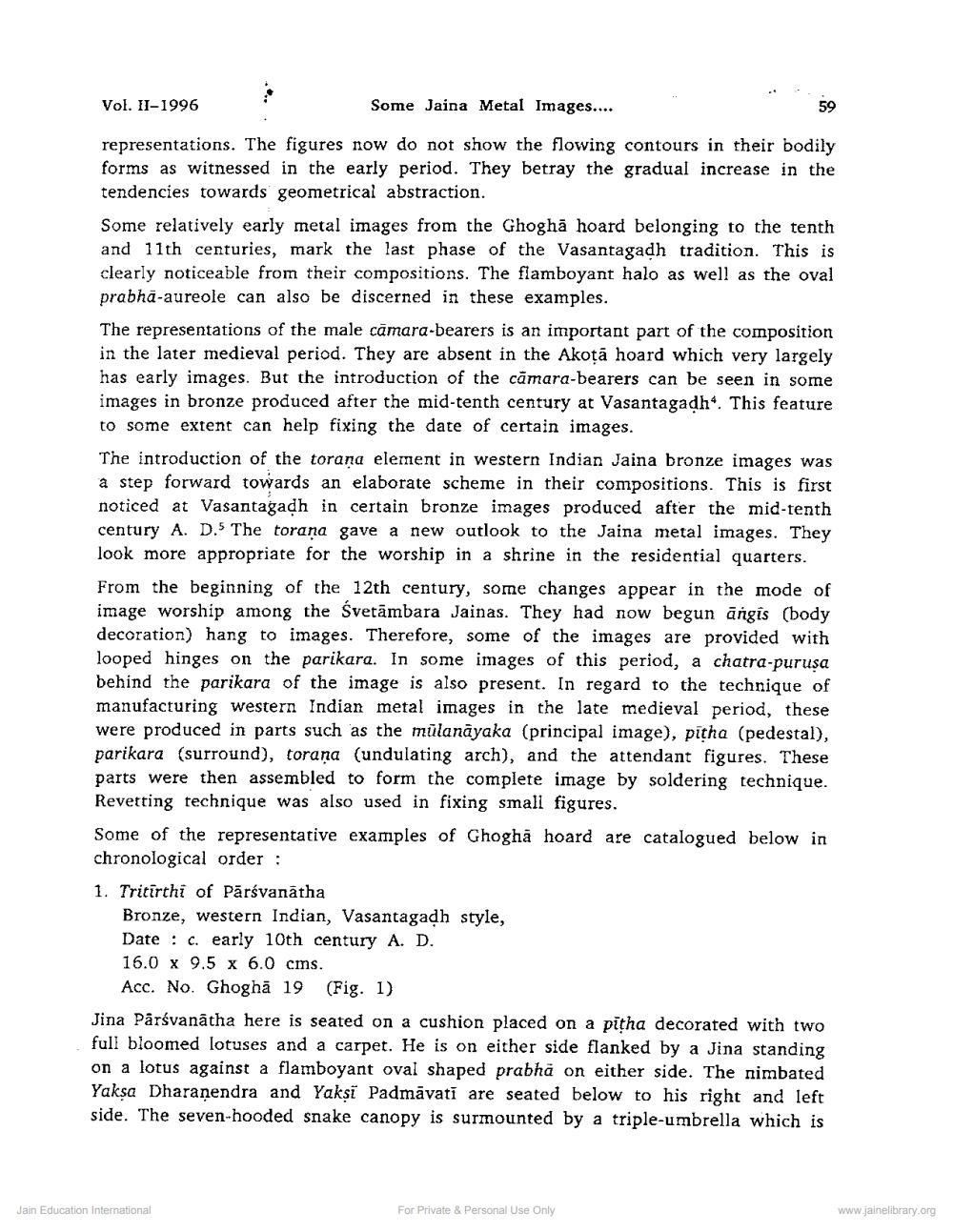Book Title: Some Jaina Metal Images From Unpublished Ghogha Hoard Author(s): Lalit Kumar Publisher: Z_Nirgrantha_1_022701.pdf and Nirgrantha_2_022702.pdf and Nirgrantha_3_022703.pdf View full book textPage 2
________________ Some Jaina Metal Images.... representations. The figures now do not show the flowing contours in their bodily forms as witnessed in the early period. They betray the gradual increase in the tendencies towards geometrical abstraction. Vol. II-1996 Some relatively early metal images from the Ghogha hoard belonging to the tenth. and 11th centuries, mark the last phase of the Vasantagadh tradition. This is clearly noticeable from their compositions. The flamboyant halo as well as the oval prabha-aureole can also be discerned in these examples. The representations of the male camara-bearers is an important part of the composition in the later medieval period. They are absent in the Akota hoard which very largely has early images. But the introduction of the camara-bearers can be seen in some images in bronze produced after the mid-tenth century at Vasantagadh. This feature to some extent can help fixing the date of certain images. 59 The introduction of the torana element in western Indian Jaina bronze images was a step forward towards an elaborate scheme in their compositions. This is first noticed at Vasantagadh in certain bronze images produced after the mid-tenth century A. D. The torana gave a new outlook to the Jaina metal images. They look more appropriate for the worship in a shrine in the residential quarters. From the beginning of the 12th century, some changes appear in the mode of image worship among the Svetämbara Jainas. They had now begun ängis (body) decoration) hang to images. Therefore, some of the images are provided with looped hinges on the parikara. In some images of this period, a chatra-purusa behind the parikara of the image is also present. In regard to the technique of manufacturing western Indian metal images in the late medieval period, these were produced in parts such as the mulanayaka (principal image), pitha (pedestal), parikara (surround), torana (undulating arch), and the attendant figures. These parts were then assembled to form the complete image by soldering technique.. Revetting technique was also used in fixing small figures. Some of the representative examples of Ghogha hoard are catalogued below in chronological order: 1. Tritirthi of Pārsvanatha Bronze, western Indian, Vasantagadh style, Date c. early 10th century A. D. 16.0 x 9.5 x 6.0 cms. Acc. No. Ghogha 19 (Fig. 1) Jina Parsvanatha here is seated on a cushion placed on a pitha decorated with two full bloomed lotuses and a carpet. He is on either side flanked by a Jina standing on a lotus against a flamboyant oval shaped prabha on either side. The nimbated Yaksa Dharanendra and Yaksi Padmavati are seated below to his right and left side. The seven-hooded snake canopy is surmounted by a triple-umbrella which is Jain Education International For Private & Personal Use Only www.jainelibrary.orgPage Navigation
1 2 3 4 5 6 7 8
